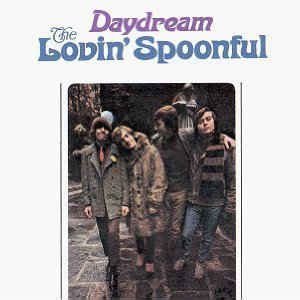July 21, 2023 —– Chart #205
Hey folks, welcome to another edition of Chart of the Week. Friends, we are going way back today deep into the 60’s. “Daydream” is a song by the American folk rock band the Lovin’ Spoonful. Written by John Sebastian, it was issued as a single in February 1966 and was the title track of the band’s second album, Daydream, released the following month. The song was the Lovin’ Spoonful’s third consecutive single to enter the top ten in the United States, and their most successful to that point, reaching number two. It was also a major international hit, becoming the band’s first single to chart in the United Kingdom and ultimately their most successful there, reaching number two.
Sebastian composed “Daydream” in November 1965 in an effort to lift his spirits amid a grueling three-week tour of the American South. He was initially inspired by the music of the Supremes, with whom the Lovin’ Spoonful was then touring, and the final composition relates to his earliest influences in jug band music. During a break from their busy touring schedule, the Lovin’ Spoonful recorded the song the following month at Bell Sound Studios in New York City. Among the instruments on the finished recording are a honky-tonk piano and four differently textured guitars, one of which uses a volume-control pedal. “Daydream” proved influential, especially among British musicians, directly inspiring the 1966 compositions “Good Day Sunshine” by the Beatles and “Sunny Afternoon” by the Kinks.
The Lovin’ Spoonful served as a support act during the tour for the American girl group the Supremes, and the two groups traveled together on the same bus. The Lovin’ Spoonful generally enjoyed the experience but found the schedule physically exhausting, and Sebastian additionally missed his wife Loretta “Lorey” Kaye. On a rainy day near the tour’s end, Sebastian was feeling particularly depressed and sought to raise his own spirits by writing a song. While riding the bus to their November 27 show in Greensboro, North Carolina, he composed “Daydream”, finishing the song in around twenty minutes.
Sebastian initially hoped to compose a song like the Supremes’ 1964 singles “Baby Love” and “Where Did Our Love Go”, both of which he thought had a “straight eighth feel”. Employing a “trick figure” he had devised months earlier to play Motown songs on guitar, his arrangement of “Baby Love” for a single guitar transformed into “Daydream”. The song employs swing, a rhythmic feel commonly heard in both jazz and blues, though Sebastian later clarified that, like both of the Supremes’ songs, the shuffle “[is not] all the way expressed”.
The song’s backing track consisted of only two guitars: a 1958 Les Paul electric played by Sebastian, and Sebastian’s Heritage Gibson acoustic played by Yanovsky. Due to the song’s staccato rhythm, the two musicians struggled to keep in sync. They soon abandoned the song to work on other compositions, returning to it when Jacobsen spliced different takes together to establish a complete guitar track. The band next overdubbed several elements, including honky-tonk piano played by Steve Boone, spoons and a slapstick from Joe Butler and electric guitar parts from Yanovsky on his Guild Thunderbird. Sebastian sang vocals, played harmonica and whistled.
On The Ed Sullivan Show: https://youtu.be/DpKFmabCjlw
The finished recording staggers the entrance of four differently textured guitars, an arrangement which Everett describes as “Beatlesque”. The last guitar to enter features a volume-control pedal, a device which had only recently begun to be employed in popular music and would be used on many recordings in 1966. Paired with a guitar, the device hides the initial attack and decay of the instrument’s tone while allowing the player to more easily control volume changes than through using the guitar’s volume control knob.
Forgive me for geeking out on the instrumentation and recording techniques. When I are trying to play like the recording sometimes I am left scratching my head wondering how they got it to sound like that. Play this song on your acoustic or electric guitar and sing away. Guaranteed to put a smile on your face.
Keep Rockin’,
Stan Bradshaw
